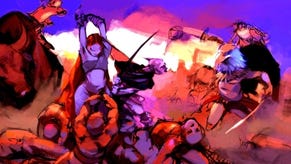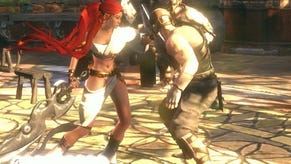Heavenly Sword
Goddess of War.
The objective, according to Ninja Theory's developers, has been to create a fighting system which has enough depth to work like a beat-'em-up in one-on-one fights, but which is also fun in large brawls and even on massive battlefields. The game's battles do range from taking on single enemies to running around a battle with 2500 participants, taking in just about everything in between along the way. Overall though it's a tricky proposition, and certainly ambitious.
Based on our play time with the game, Heavenly Sword takes a damn good stab at such a tough challenge. The controls feel fluid and dynamic, with incredibly well choreographed moves blending together to form great-looking combos even during our earliest fumbling experiments. Little tactics like doing a spinning Ranged attack to knock back a scrum of approaching enemies came naturally, while chaining attacks from different stances together seemed to be the key to hitting the weak points of armoured or shielded foes.
No game of this sort would be complete without some satisfyingly brutal finishing moves, and Nariko brings plenty of those to the table. As you play, you charge up "orbs" for special attacks, which can then be executed using the circle button - one special for each stance. These specials can be eye-wateringly brutal (we're really not fond of the Heavy stance special attack which sees the sword slammed into the crotch of a retreating enemy), but also sport some tactical depth. The ranged special, for example, clears a breathing space around Nariko by swinging around a single impaled enemy on a pair of chains - ideal in a tight corner.
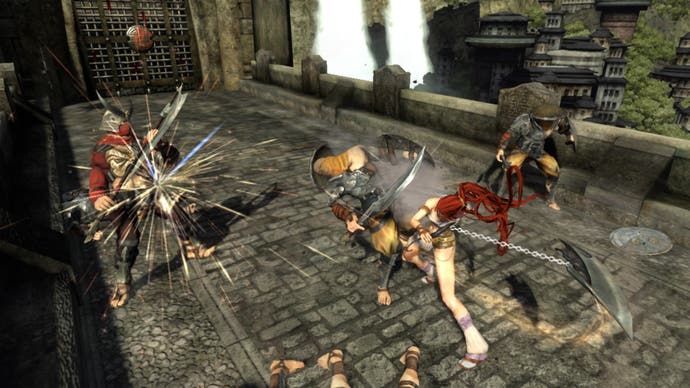
Unfortunately, we don't feel like we've played enough of the game to say whether the combat is as good as God of War's, but what we can say is that there's absolutely no reason why what we've seen of Heavenly Sword couldn't blossom into a combat system as deep and satisfying as God of War's over the course of the full game. It's all very promising.
Very Special Moves
The game has some tricks of its own to bring to the table, too. Almost every object in the environment can be destroyed, and as you fight the various levels will pile up with corpses and the debris of shattered furniture and fittings - all of which is subject to physics, and makes a glorious mess.
You can also pick up the bulk of the objects in the game and hurl them at enemies. This even demonstrates an actually rather sensible use of the Sixaxis functionality of the PS3 - there's a little bit of aftertouch on everything you throw, which means you can steer objects in flight by tilting the pad.
Later in the game, there are also points where you play as Nariko's companion, Kai - a younger girl who seems half-feral, and is armed with a very big crossbow. Her stages are specifically laid out as shoot-'em-up stages, from what we saw, and have a unique set of puzzles - we especially liked one which required that you set arrows on fire by shooting them through torches. Oh, and the crossbow bolts, too, have Sixaxis aftertouch on them.
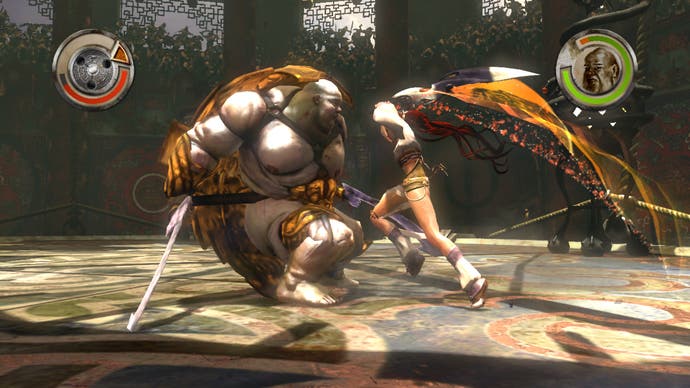
Of course, Heavenly Sword wouldn't be much of a showcase for the PS3 without having stunning graphics - and that's one area where the game isn't likely to attract much criticism. It's one of the best-looking titles we've ever seen, with incredibly detailed scenery stretching hundreds of metres into the distance - complemented by life-like and superbly animated foes, even in scenes where there are dozens on screen at once.
Indeed, the whole affair comes across as being simply beautiful - with some points in the game having an almost (dare we say it?) ICO-esque feel thanks to the large-scale puzzles and vast, ancient architecture which reaches off into the distance.
And then you have the characters. Yes, it's cut-scene stuff, but Weta and Ninja Theory absolutely deserve praise in this department. According to Serkis, this is the first time that multiple actors have been motion-captured acting out scenes together, with both their body movements and their facial expression being captured. Frankly, the benefits of the technique shine through clearly.
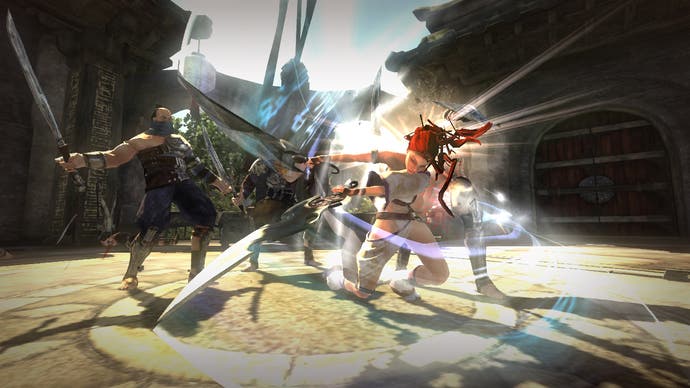
The characters are given an astonishing level of depth and emotion by their actors, who imbue the tale - focused on Serkis' wonderfully insane and malevolent King Bohan - with a truly Shakespearean feel. Nariko, her compatriots and her foes don't just have a set of facial expressions to suit all circumstances; they genuinely emote, and react, and provide exactly the sort of powerful character performances that you don't expect to find in a videogame.
Ninja Theory's claims for the game may be somewhat optimistic - there was talk of combining the drama of Kurosawa with the visual flair of Hero, of videogames entering a Golden Era not unlike that of film, all of which may be somewhat premature. However, what we've seen of Heavenly Sword so far suggests a game strong enough to stand up in the face of its own hype.
It's got killer looks, fluid, fun gameplay, a genuinely superb heroine - and, lest we forget, the best cut-scenes you've ever seen in a videogame. Comparisons with God of War are easy, and not remotely unfair, but if there's a sin in producing a visually stunning, professionally executed title in the God of War mould for a next-gen system, then it's not one our faith condemns. Besides, it's got that bloke who played Gollum in it - what more could you want?




